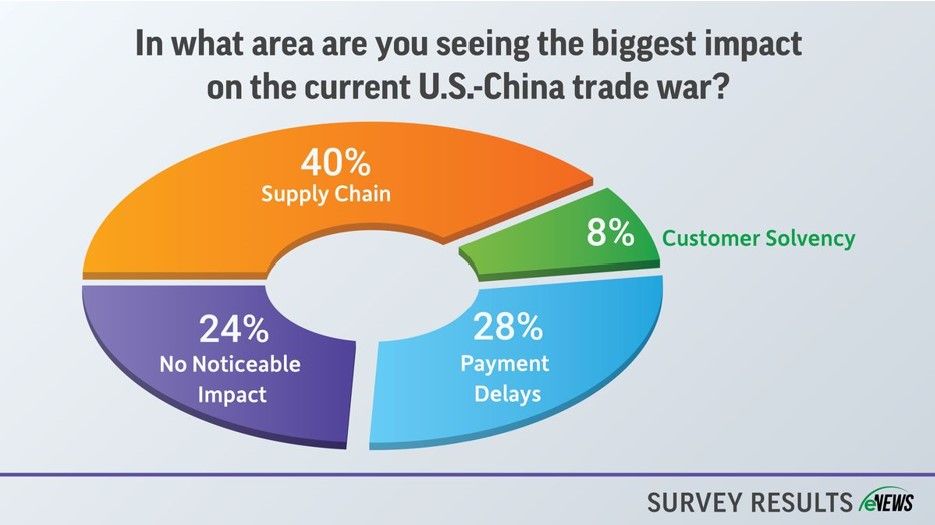Construction, eNews
Getting to know Nevada’s lien laws

Lien rights are the backbone of any risk mitigation strategy in the construction credit field. There is a lot to consider when filing a mechanic’s lien, and it can be a bit of added stress for credit managers still getting their footing in the industry. However, it is a crucial step in protecting your interest and mitigating risk during construction projects.
Why it matters: Construction credit managers must understand how lien laws vary from state to state to ensure that they are protecting their lien rights every step of the way.
Why file for a mechanic’s lien?
“Mechanic’s liens favor subcontractors, contractors and suppliers by helping them secure payment for labor, materials, equipment and supplies rendered and services provided,” Madison Wedderspoon, Esq. said. “The lien puts pressure on the owner and general contractor to pay the lien because it can hold up construction and they want to maintain security interest on the property.”
A mechanic’s lien is also a way to enforce payment when an owner or contactor is dragging their feet on paying their debts. The added security in property where you’ve supplied materials, equipment or labor is valuable.
Who has lien rights?
Nevada lien laws are broad, but it is important to be sure that you are guaranteed lien rights on a project. “Any person who provides work, materials or equipment with a value of $500 or more, that is used in the construction, alteration or repair of any property is entitled to a mechanic’s lien,” Wedderspoon said.
There are, however, important prerequisites to consider. If you are acting as a contractor, subcontractor or design professional on a project, you must be licensed to have lien rights. Suppliers typically will not need a license to secure their lien rights.
It is important to understand the full scope of your license to ensure that the work you are performing on a project is within the confines of what you are licensed to do. When the Nevada State Contractors Board issues contractor, they lay out clear limitations on exactly what each contractor can perform. “In addition to a contractor’s license, the lien claimant must also have an adequate contracting license limit amount,” Wedderspoon said. “For example, if the work involves an electrical wiring project, the contractor must be licensed in electrical contracting and be within their bid limit amount to then later file a mechanic’s lien if they have not been paid.”
Not only are the areas a contractor is licensed to perform laid bare, but the Contractors Board also specifies the contract amount a licensee may perform. “A contractor entering into a contract that exceeds the bid limit on their license is considered unlicensed and there are very limited exceptions,” Wedderspoon said. “And an unlicensed lien claimant, when the license is required, has no right to record a lien.”
What projects can you file a lien for?
Projects on real property, whether it is a full-fledged construction project or an improvement project, are subject to liens. Any construction disbursements or surety bond set up by lessee under Nevada state lien laws are also subject. Government projects will require surety bonds, but federally owned land is not susceptible to a lien, but leasehold interest involved in the project could be subject to a lien.
It’s important for suppliers to understand exactly where their materials are being used, especially when there are multiple buildings under one project. “When dealing with multiple parcels or buildings, it’s important to understand if labor or materials are incorporated into the building, more than one building or located on separate legal parcels,” Wedderspoon said. “If they’re owned by the same person or entity, the provider may record a single lien against several buildings, and that comes from Nevada case law.”
It is vital that suppliers know which amounts were owed to each building involved in a project. The failure to allocate the lienable amount amongst various buildings where work was provided or different amounts are owed to each building will result in subordination, meaning the lien holder will give up their first priority to another lien holder.
What priority does a lien have?
A mechanic’s lien takes priority over any lien, mortgage or other encumbrance that was not recorded on the property at the time of project commencement. Additionally, a mechanic’s lien has priority over any unrecorded lien, mortgage or other encumbrance, when the claimant had no knowledge of the commencement of work. All mechanic’s liens within scope of a general contract have equal priority. If there are insufficient funds, labor has first priority, followed by materials and equipment suppliers.
Filing your preliminary notice
Every lien claimant who claims the right to record a mechanic’s lien must deliver, either in person or by certified mail, a Notice of Right to Lien to the owner of the property. The preliminary notice can be sent any time after the first delivery of materials or beginning of work. The notice must be sent within 31 days after the first delivery of materials, or that material will not be protected by lien rights. The notice must also be delivered to the prime contractor for “information only.”





